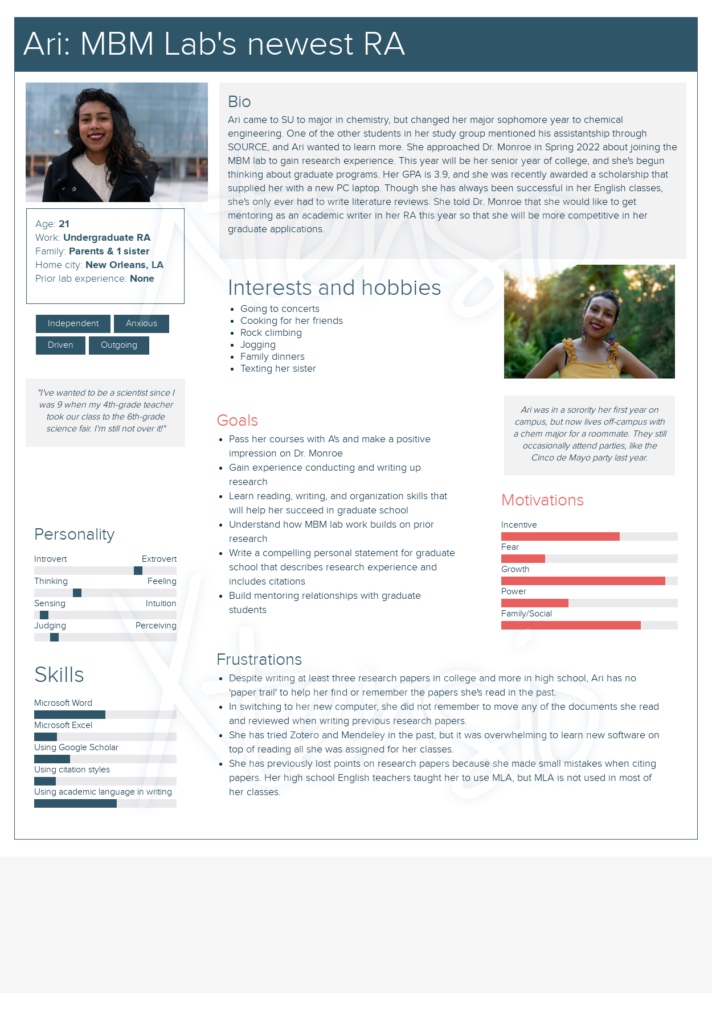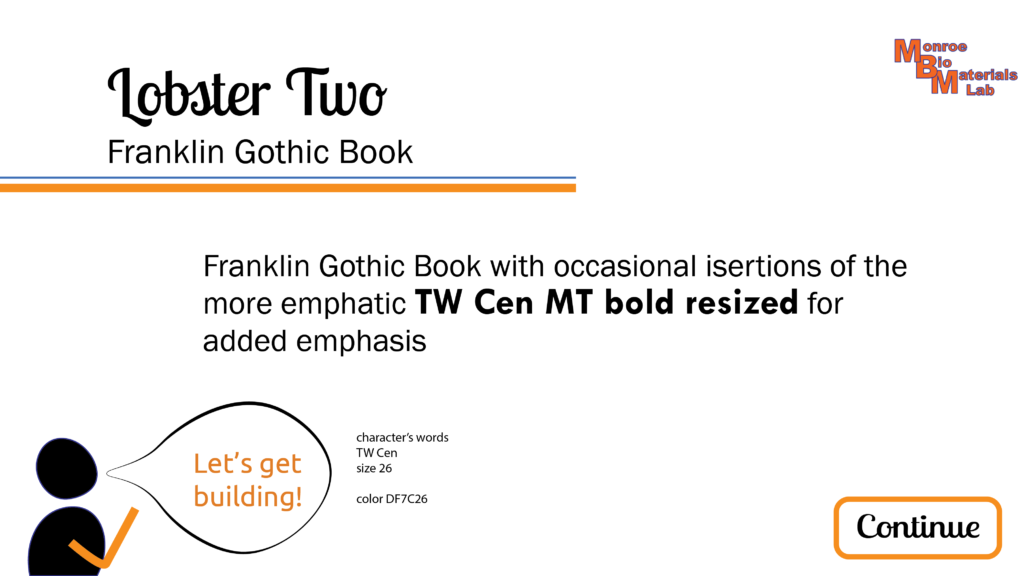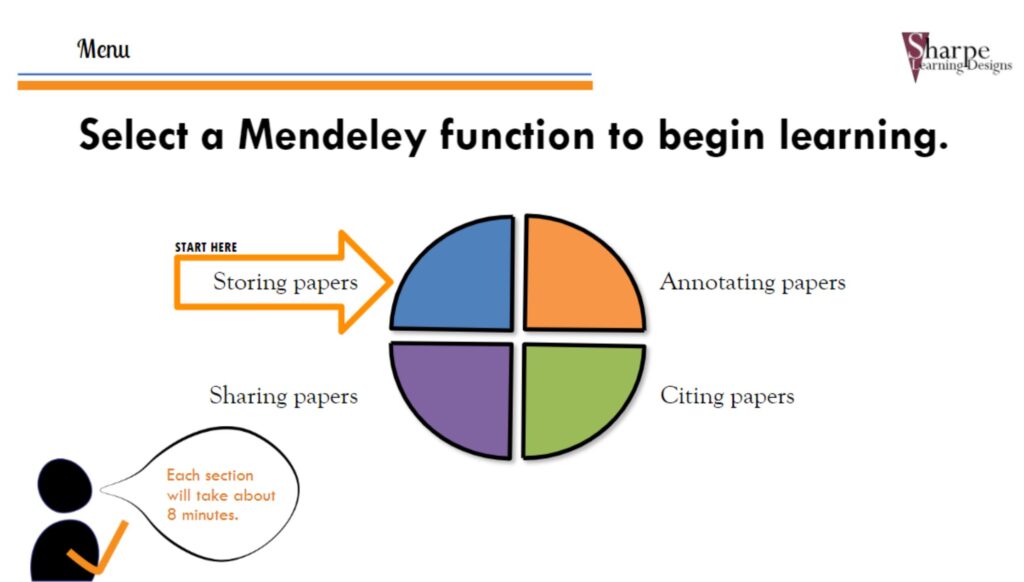
The course features interactive menus that use triggers to show users what they’ve completed.
Project status: Final review.
Role: end-to-end instructional design, including discovery, design, development, and evaluation.
Tools used: Articulate Storyline, Replay; Adobe Premiere Pro, XD, Illustrator, Acrobat; Camtasia; Microsoft Word.
Client profile: The client is a professor of chemical engineering. She is the principal investigator (PI) of a lab staffed by 3-5 undergraduate RAs, 3-6 graduate student RAs, and an occasional postdoc.
The problem: New researchers in the lab need to be onboarded every year. One element of onboarding is learning to use Mendeley reference manager, a cloud-based software for managing research papers, citations, and shared writing.
The solution: This ~20 minute onboarding course equips new research assistants to efficiently use Mendeley. The module focuses on the 4 primary functions of Mendeley, and is designed around principles of androgogy, perceived value, social learning theory, and realistic assessment.
The Process
Analysis. I started by conducting an interview with an advanced lab member, who served as an SME for the lab’s specific uses of the software. Following this interview, I developed a Foundations Document that summarized the project goals and design tasks. Once the client, SME, and I had agreed-upon learning objectives in place, I developed a persona to orient discussions about the project around a fictional, but realistic, user. I used Xtensio to quickly lay out this persona in a clean, appealing format.
Design. In designing this project, I really wanted to tap into the learners’ motivations: to grow as an engineering major, to advance as a scholar, and to avoid embarrassment caused by returned papers. At first, I wanted to tap into these motivations right off the bat by asking them to reflect on their own experiences. If we can get the learner to agree with us that there is a problem – and that it’s not just a problem for THEM – they will be more ready to consider what follows as a solution.
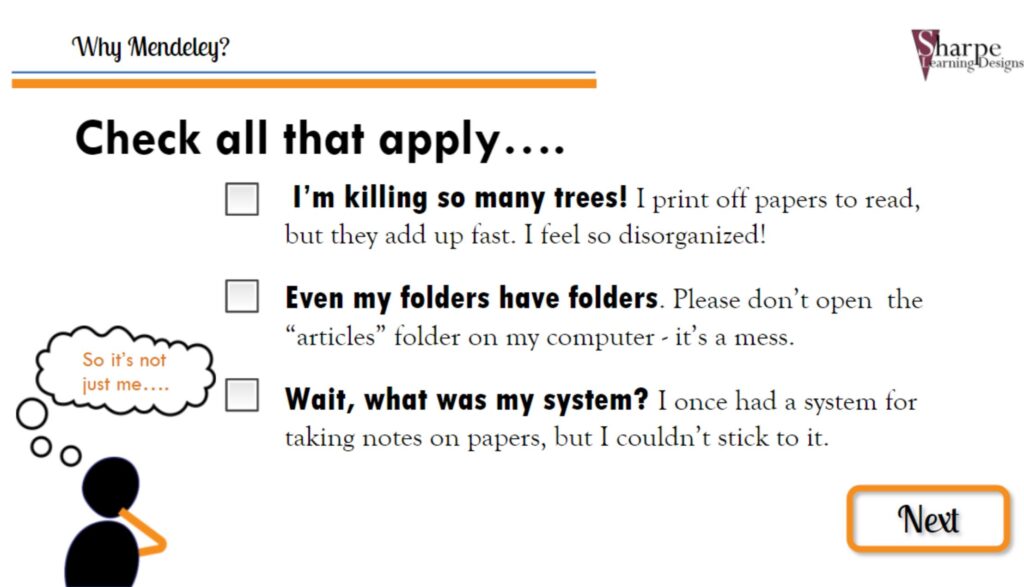
I also wanted to make sure the learners felt a sense of self-efficacy, so I made sure to incorporate lots of distributed practice throughout the course. I also kept the videos short (2-5 minutes each) with an opportunity to immediately practice each skill before moving on to the next.
The final assessment for learners is to produce a document that demonstrates their use of the software.
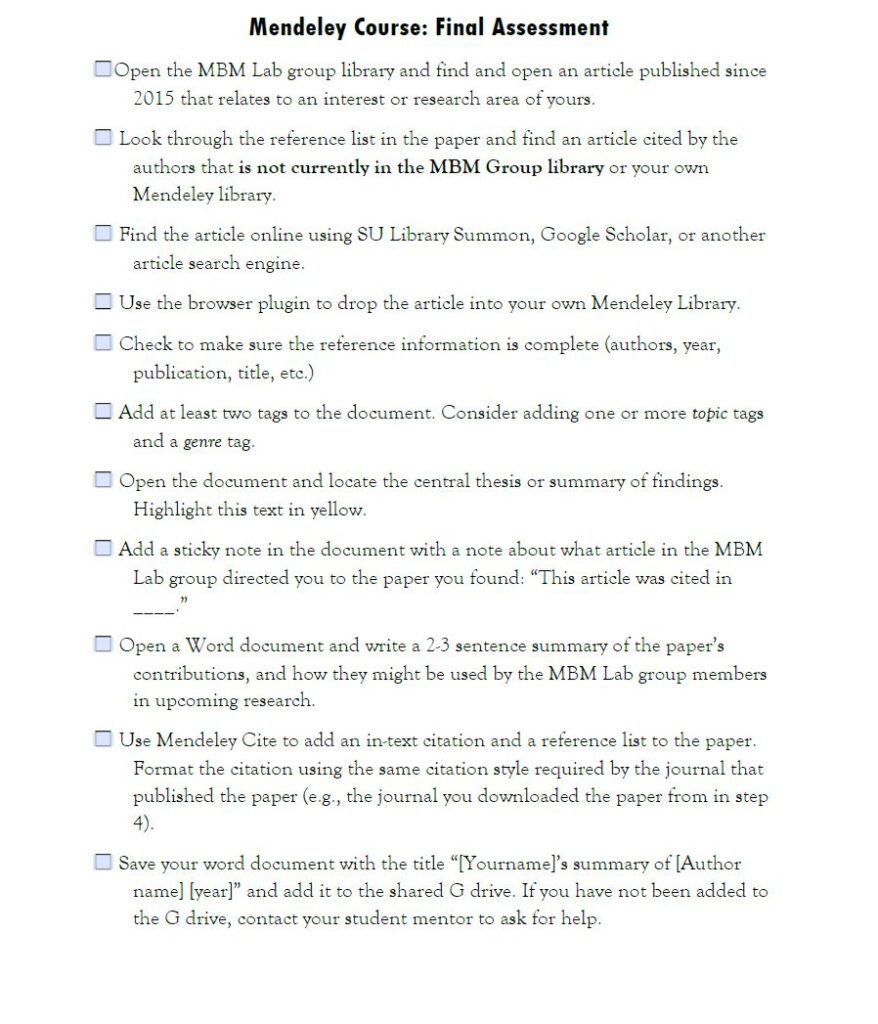
Development. I developed the course in Articulate Storyline. All the videos were scripted by me (except for the video about Mendeley Cite) and created using Camtasia, Articulate Replay, and Adobe Premiere Pro. I created custom graphic characters for this project in Adobe Illustrator.
Implementation. The client is planning to implement this course with her new RAs sometime during Fall 2022.
Evaluation. Since her incoming cohort each year is relatively small, the PI intends to evaluate her lab members’ skills with Mendeley by examining the final product they create in the course: a short word document they upload and send to their graduate student mentor, who can also serve as a resource for continued learning about the software.
